The worst mistake when creating an asset protection plan is to mix safe and risky assets. For example, if we were to create an LLC we wouldn’t put your rental real estate property in there with a bunch of cash. If something happens to the real estate and the LLC gets sued, then you have just exposed the cash to that lawsuit. By making a distinction between safe and risky assets, we are able to separate and then ultimately combine the assets once they are protected.
Risky assets and where they belong in your asset protection plan

You can’t hurt someone with a $100 bill or a stack of bills. They don’t have the same risk components as things with a door, motor, key, something you can start, walk on or fall on. Businesses are also seen as risky assets. You can hurt someone with the services you provide, or products you sell.
Taking a closer look at safe assets
What do you do with bank and brokerage accounts? Brokerage and bank accounts are safe assets, therefore they are placed in your limited partnership. You can put them directly in your limited partnership because they are not going to create any risk. Your statement should say the ABC Limited Partnership on your savings brokerage account. Ultimately in the end, your asset protection trust will provide the ultimate protection by owning the majority interest in your limited partnership.
What should you do with personal income from your job, business or practice?
It’s not a very good plan to allow your job, practice or business to fill up the coffers with retained earnings. By not making good distributions of these assets and allowing the cash to build up in your practice, you are creating an unsafe environment for the rest of your assets. Cash inside your practice is subject to the liabilities of your practice. So if someone ever decides to sue the practice they are also going to go after any cash or any other assets tied to the practice.
If you would like to learn more about safe and risky assets or about how we can help you separate and distribute these assets call Lodmell & Lodmell today. We’ll be happy to answer any questions you may have or discuss any topics regarding asset protection in further detail.
